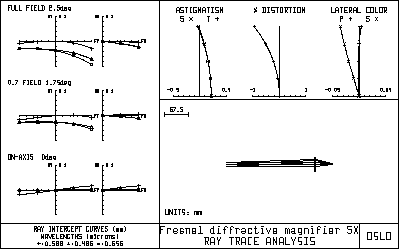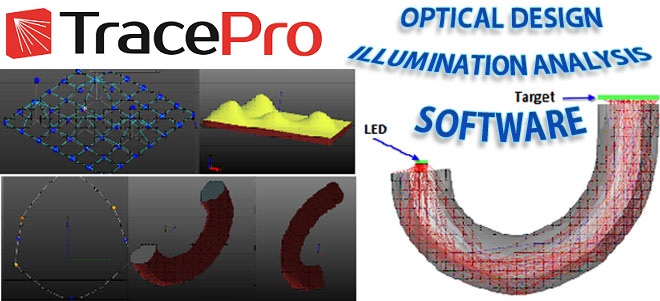OSLO
Diffraction Grating Software : Optics Software for Layout & Optimization
OSLO is a powerful optics design program. In addition to classical lens design features, OSLO compbines advanced ray tracing, analysis, and optimization methods with a high speed macro language to solve a wide variety of new problems in optics design.
OSLO handles most types of optical components (lenses, mirrors, diffraction gratings, prisms, etc.) using a combination of geometrical and physical optics methods
Price Starting from $ 1250 ( Rs. 62,500 )
- An infrared diffractive achromat
One of the first practical applications of diamond-turned computer-generated holograms was a single element achromat for the infrared. This lens, designed by Reidl and McCann, is discussed in detail in the Optics Reference manual. It combines a conventional aspheric on the front surface with a diffractive surface on the back of a Germanium singlet to achieve good performance at f/1. Note that the system, while achromatic, has secondary spectrum that cannot be corrected using this scheme.

A Fresnel diffractive magnifier
The Fresnel diffractive magnifier is a plastic element with an aspheric Fresnel surface on the front and a diffractive surface on the back. It is an interesting system for both its tutorial value and its optical performance. The optical performance is much better than that of a simple lens, as shown by the ray analysis below.

A Fresnel surface in OSLO is one that has the power of a curved surface, but is actually placed on a substrate having a different curvature (usually flat). This is accomplished by dividing the surface into prismatic zones, so that the surface normal approximates that of the curved refracting surface at any point. As the number of zones increases, the approximation becomes better. Fresnel surfaces were originally used in searchlights, where a substantial reduction in weight was accomplished. More recently, Fresnel surfaces have been used in a variety of consumer optics products made from embossed plastic.
A diffractive surface is outwardly similar to a Fresnel surface, but there is an important difference between the two: With a Fresnel surface, light from different zones combines incoherently, while with a diffractive surface, light from different zones combines coherently. The former follows the laws of refraction, while the latter follows the laws of diffraction.
Knowledge Base >>> Click On Product To Know More..

